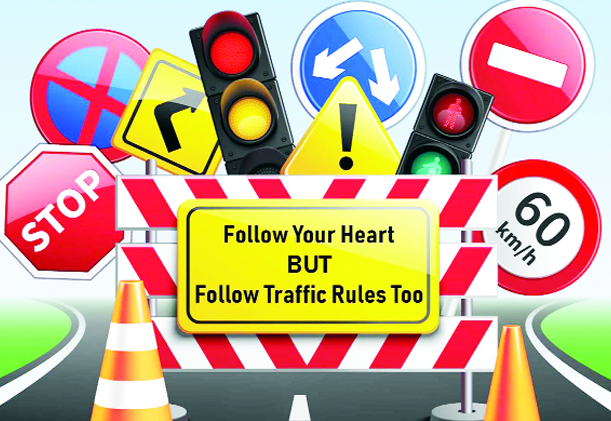The India Status Report on Road Safety 2024 (GS Paper 1, Society)

Context
- The “India Status Report on Road Safety 2024,” prepared by the TRIP Centre at IIT Delhi, provides a critical assessment of the country’s progress toward improving road safety.
- The report highlights India's slow advancement in meeting international road safety goals and underscores the interconnectedness of road construction, mobility, and the need for targeted strategies to mitigate road accidents.
Key Findings of the Report
Slow Progress Toward International Goals:
- The report reveals that despite various advancements in other sectors, road safety in India has seen little progress.
- The country is unlikely to meet the United Nations Decade of Action for Road Safety goal of halving traffic deaths by 2030.
- In 2021, road traffic injuries were the 13th leading cause of death and the 12th leading cause of health loss (measured in Disability-Adjusted Life Years, or DALYs).
- In six states—Haryana, Jammu and Kashmir and Ladakh, Punjab, Rajasthan, Uttarakhand, and Uttar Pradesh—road traffic injuries ranked among the top 10 causes of health loss.
Disparities Across States:
- The report highlights significant variations in road safety across India.
- States like Tamil Nadu, Telangana, and Chhattisgarh report the highest per capita death rates, with figures of 21.9, 19.2, and 17.6 per 100,000 people, respectively.
- Conversely, West Bengal and Bihar report the lowest rates at 5.9 per 100,000 in 2021.
- Additionally, six states—Uttar Pradesh, Maharashtra, Madhya Pradesh, Karnataka, Rajasthan, and Tamil Nadu—account for nearly half of all traffic fatalities in the country.
Vulnerable Road Users:
- Pedestrians, cyclists, and motorized two-wheeler riders are the most common victims of road accidents.
- Trucks, on the other hand, are involved in a significant proportion of fatal crashes.
- The report also notes that helmet usage among motorized two-wheeler riders is low, especially in rural areas, despite its potential to reduce fatalities and serious injuries.
Crash Surveillance System:
- The report identifies a critical gap in road safety management due to the lack of a national crash-level database.
- Currently, road safety statistics are compiled from police station records, which are aggregated at district, state, and national levels before publication.
- This method allows for only basic analyses, hindering effective intervention and program evaluation.
- Inaccuracies in data—such as details on the victim’s mode of transport—further complicate road safety management.
The Need for Improved Crash Surveillance
A crash surveillance system is essential for accurate and comprehensive road safety management. Such a system would involve:
- National Database for Fatal Crashes: Establishing a centralized database that captures detailed crash-level data across the country. This would allow for better tracking of road safety issues, identification of high-risk areas, and evaluation of intervention effectiveness.
- Public Access to Data: Providing public access to this database would improve transparency and enable better understanding of specific risks associated with different road users.
Comparison with Global Standards
- The report contrasts India's road safety situation with that of developed countries, particularly Scandinavian nations like Sweden.
- In 1990, an Indian was 40% more likely to die in a road accident compared to someone in these countries.
- By 2021, this discrepancy had escalated to 600%, indicating a dramatic increase in road fatalities in India.
- The report raises questions about whether improvements in vehicle safety features alone are sufficient, given that two-wheeler riders, cyclists, and motorcyclists—who often lack such advanced safety features—constitute a large portion of road fatalities.
Recommendations for Improvement
- Scale-Up of Road Safety Interventions: Central and state governments need to prioritize and expand road safety measures. This includes enhancing road infrastructure, improving traffic management, and increasing public awareness about road safety.
- Establishment of a National Crash Database: Developing a comprehensive national database for fatal crashes will improve the ability to analyze and address road safety issues effectively.
- Tailored State-Specific Strategies: Given the varying road safety challenges across different states, tailored strategies are essential. This includes addressing specific issues such as helmet usage, pedestrian safety, and improving trauma care facilities.
- Public and Policy Engagement: Engaging with the public and policymakers to emphasize the importance of road safety and implement effective policies based on accurate data.
Conclusion
- The “India Status Report on Road Safety 2024” highlights critical issues in the country’s road safety landscape.
- With road traffic injuries remaining a major public health challenge and significant disparities across states, the report calls for urgent and comprehensive action.
- Establishing a national crash surveillance system, improving data accuracy, and scaling up road safety interventions are crucial steps toward reducing fatalities and improving road safety in India.
- The path forward involves a concerted effort from both central and state governments to address these challenges and work towards safer roads for all.


